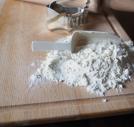Taking Care of Yourself with the Right Diabetic Foot Care Methods
Taking care of the feet is essential as diabetes can cause a variety of problems in the feet.
The effects of peripheral neuropathy can cause loss of feeling in the feet (sensory neuropathy), weakness and pain in the muscles of the legs and feet (motor neuropathy), and overall problems with the skin's sweat glands, leading to dry, cracked skin (autonomic neuropathy).
These symptoms, when combined with other effects of diabetes, including poor blood circulation and decreased immune system response, can lead to severe foot problems if the diabetic does not take good care of his or her feet.
Skin ulcers, cracked skin and fungal infections can be very hard to treat for a diabetic, and may not heal properly without extensive medical care. In long term cases, improper footcare can cause bone displacement as well, and in severe cases of poor circulation, amputation of the toes may become necessary. Prevention is definitely your best option!
Foot care options for diabetics
Diabetic footcare starts with controlling blood sugar levels, which decreases the severity of all of the aforementioned symptoms. But because diabetic foot problems are hard to completely avoid, there are many options that will minimize pain and injury.
Preventing dry skin
Using diabetic foot cream and toenail oil can help counteract the effects of autonomic neuropathy and resulting dry skin. When skin becomes dry and cracked, fungal infections and slow healing skin become a major problem.
Massage for circulation
Massage, both by hand and with foot rollers, can prevent diabetic foot problems caused by poor circulation and muscle weakness. Special supportive socks are also an important part of treating diabetic circulation problems in the feet.
What you should NOT do
Diabetics should never use over-the-counter wart or callous removal treatments. These products are too strong and can damage the skin on a diabetic's feet. If you have these problems, talk to your doctor about appropriate care products.
Making sure to wear proper shoes and socks designed to prevent diabetic foot problems will help a great deal in preventing pressure ulcers, fungal infections and bone problems. Insoles with proper foot support, shoes with good air circulation, and socks to help support proper blood circulation are all very important tools in preventing serious foot injury in the diabetic.


































